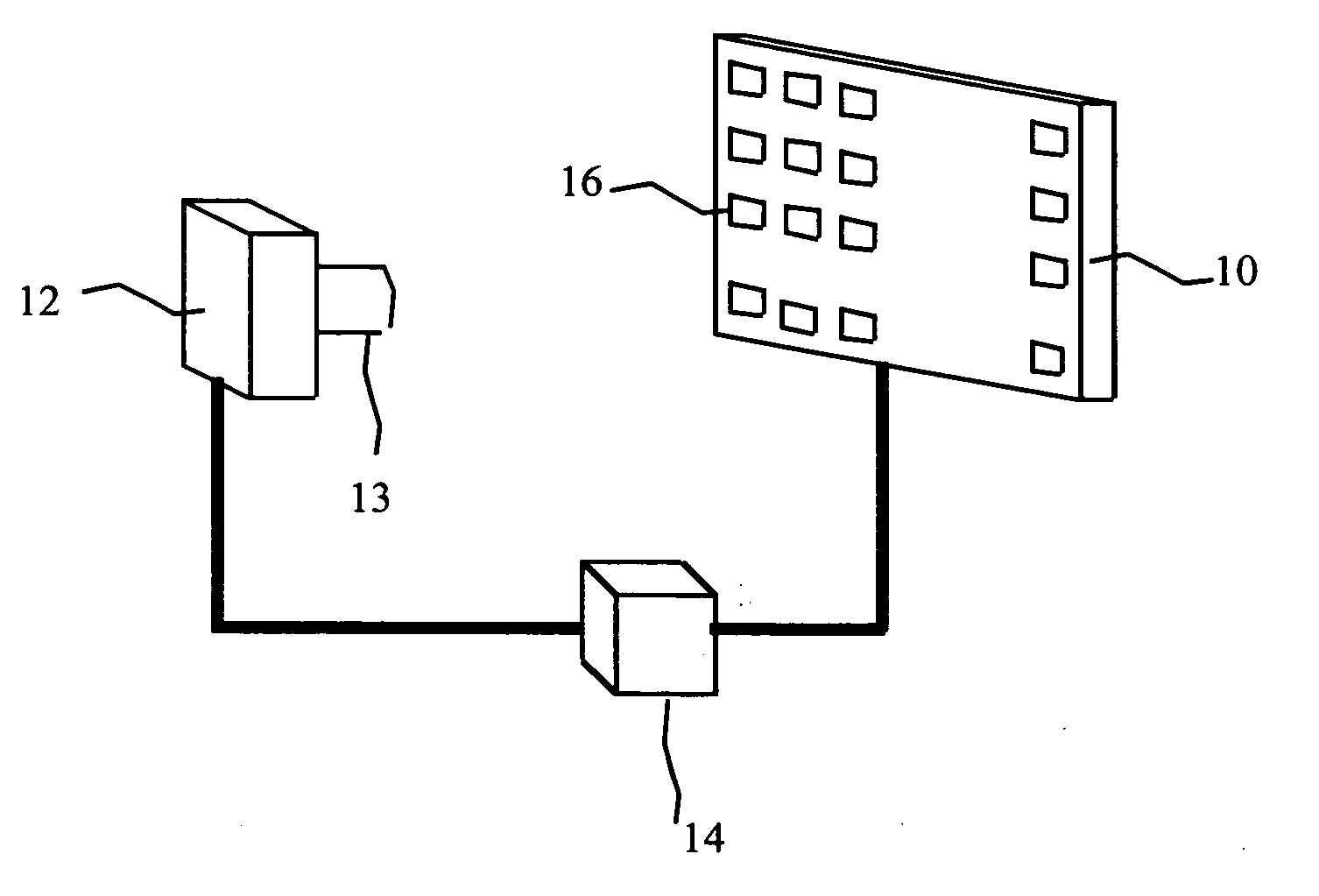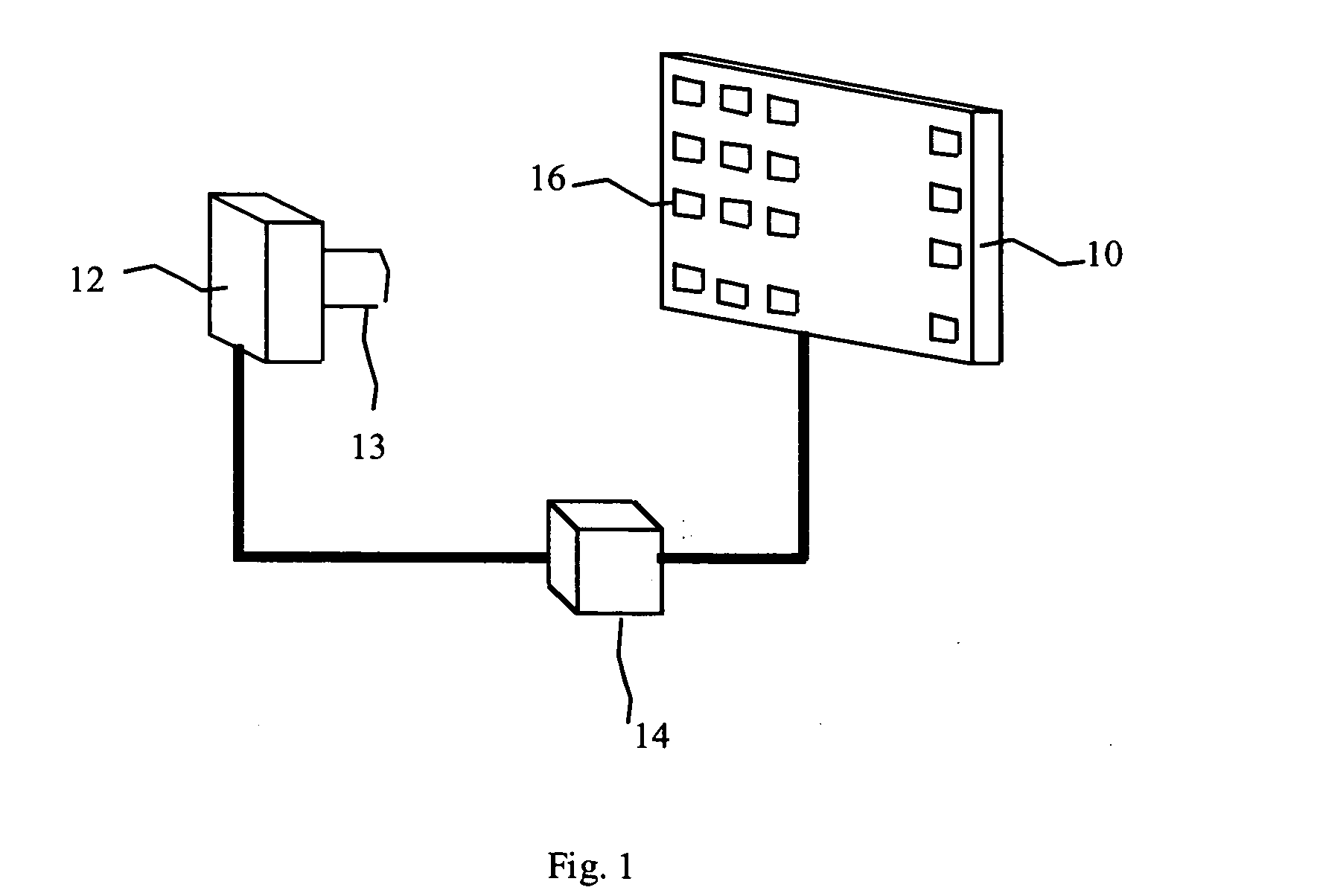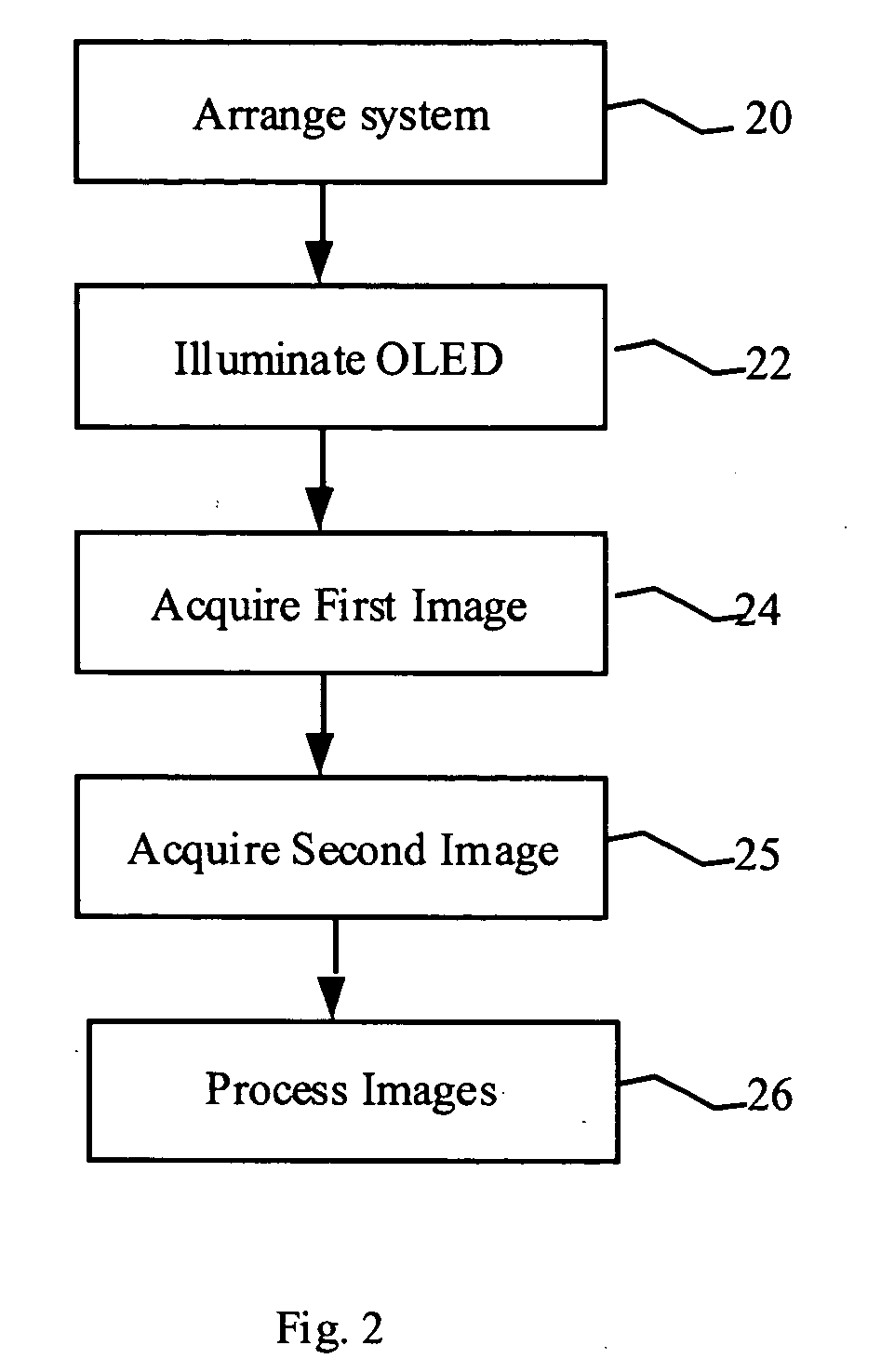Uniformity and brightness measurement in OLED displays
a technology of uniformity and brightness, applied in the field of system and method for measuring the performance of oled displays, can solve the problems of limiting the quality of oled displays, oled displays suffering from non-uniformity of light-emitting elements, and no specification for the resolution of imaging systems or analysis processes, so as to achieve the effect of improving efficiency and accuracy
- Summary
- Abstract
- Description
- Claims
- Application Information
AI Technical Summary
Benefits of technology
Problems solved by technology
Method used
Image
Examples
Embodiment Construction
[0017]FIG. 1 depicts a system for the detection of brightness uniformity variations in light-emitting elements in an OLED display 10 having a plurality of light-emitting elements 16 having perceptible brightness uniformity variations less than a threshold value when driven with a common signal; an imager 12 with one or more light-sensitive sensor elements having variable light exposure levels and sensitive to the light emitted by the light-emitting elements, where the sensor elements are not capable of detecting brightness uniformity variations less than the threshold value at a first light exposure level; optical elements 13 arranged so that the light-sensitive sensor elements are exposed to the light-emitting elements of the OLED display; and a controller 14 programmed to control the OLED display and cause the light-emitting elements to illuminate and the imager to acquire images of the illuminated light-emitting elements in the OLED display at at least the first and a different s...
PUM
 Login to View More
Login to View More Abstract
Description
Claims
Application Information
 Login to View More
Login to View More - R&D
- Intellectual Property
- Life Sciences
- Materials
- Tech Scout
- Unparalleled Data Quality
- Higher Quality Content
- 60% Fewer Hallucinations
Browse by: Latest US Patents, China's latest patents, Technical Efficacy Thesaurus, Application Domain, Technology Topic, Popular Technical Reports.
© 2025 PatSnap. All rights reserved.Legal|Privacy policy|Modern Slavery Act Transparency Statement|Sitemap|About US| Contact US: help@patsnap.com



